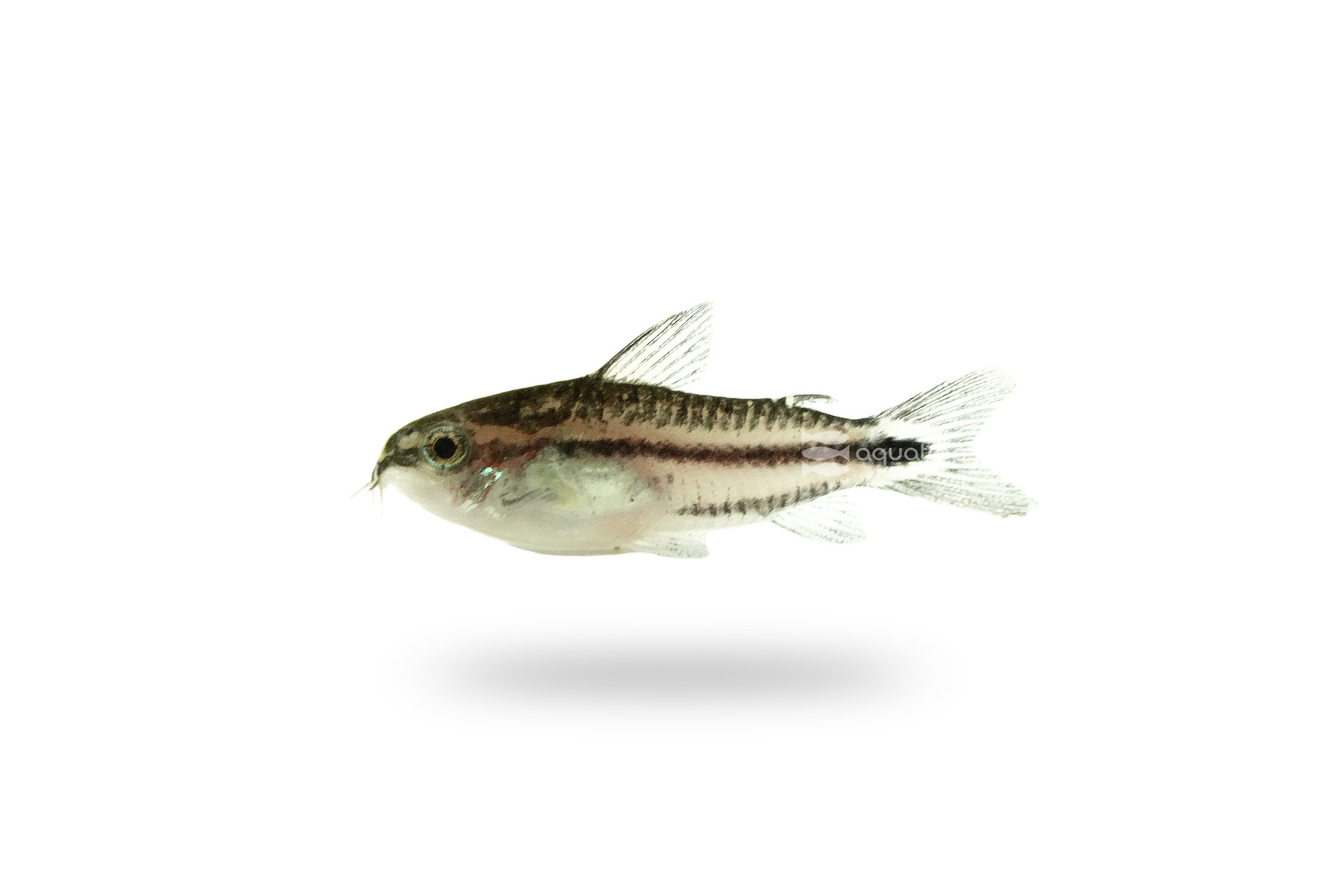The Pretty Pygmy Cory

The Pygmy Cory (Corydoras pygmaeus) belongs to the family Callichthyidae or the armored catfishes due to the protective bony plates that cover their bodies; the Pygmy Cory gets its name from its diminutive size, only attaining a little more than an inch in length, with males being slightly smaller than females. They are silver with one stripe running from the head to the tail down the sides of the fish. Found in the Rio Madeira basin in Brazil, these fish are found living in large groups in small habitats; pools, creeks, and close to dense clumps of roots or other vegetation. Their ability to navigate and survive in these tight quarters makes them ideal for aquaria and specifically planted tanks! In the wild, they can survive small, oxygen deficient habitats by breathing air from the surface! They absorb oxygen as air travels through their digestive tract!
Cories are social animals and should be housed with others of their kind, and ten gallons should be the minimum size for even a small group to be housed in. A large aquarium is not required for keeping Pygmy Cories, but one could be used to display a large group – which would result in a fairly stunning display. Cories will appreciate plenty of plants and structure to mimic their wild habitat, a fine substrate, such as sand for them to root around in and an air gap at the top of the aquarium; even though their gills work, Cories still like to surface to gulp air. While Pygmy Cories are peaceful, community tanks can sometimes be stressful for them, as they are so small that they are easily scared and bullied by other fish. Only the most peaceful fishes should be considered for tankmates.
Pygmy Cories are eager feeders that will accept almost all aquarium fare. Pellets, flakes, and frozen foods are all acceptable if they are small enough to fit into their miniature mouths. Insuring that food size is small enough will help avoid food waste and therefore bad water quality. Cories will prefer food that is in the bottom third of an aquarium, so employing sinking pellets, wafers and similar foods may help them to compete for food. In the wild their diet would consist of tiny aquatic invertebrates which they would be constantly on the prowl for.
Females will be larger and plumper than males, especially when in breeding condition. Like many Amazonian species, simulation of the rainy season is usually the key to spawning. Once fish are in breeding condition, you can simulate the dry season by lowering water level, reducing aeration, and increasing temperature. If you follow this with large water changes, with cooler water, and increased aeration, it will likely trigger spawning activity. Repeat these cool water changes daily, and watch for spawning. The females will hold only a few eggs at a time in their fins as males approach and fertilize the eggs. The female will then take the adhesive eggs and attach them to smooth surfaces. Aquarium glass can be a common location for the eggs to be attached. From there, the eggs will hatch in a few days and you can remove the adults, and feed infusoria to the young.
Pygmy Cories are an active, interesting species that is uniquely suited to small and planted aquaria. Spawning the miniscule fry is an achievable goal; rearing the young to adulthood adds a dimension of complication. Talk to your local fish store about getting some of these mini armored catfishes from Aquatropic today!